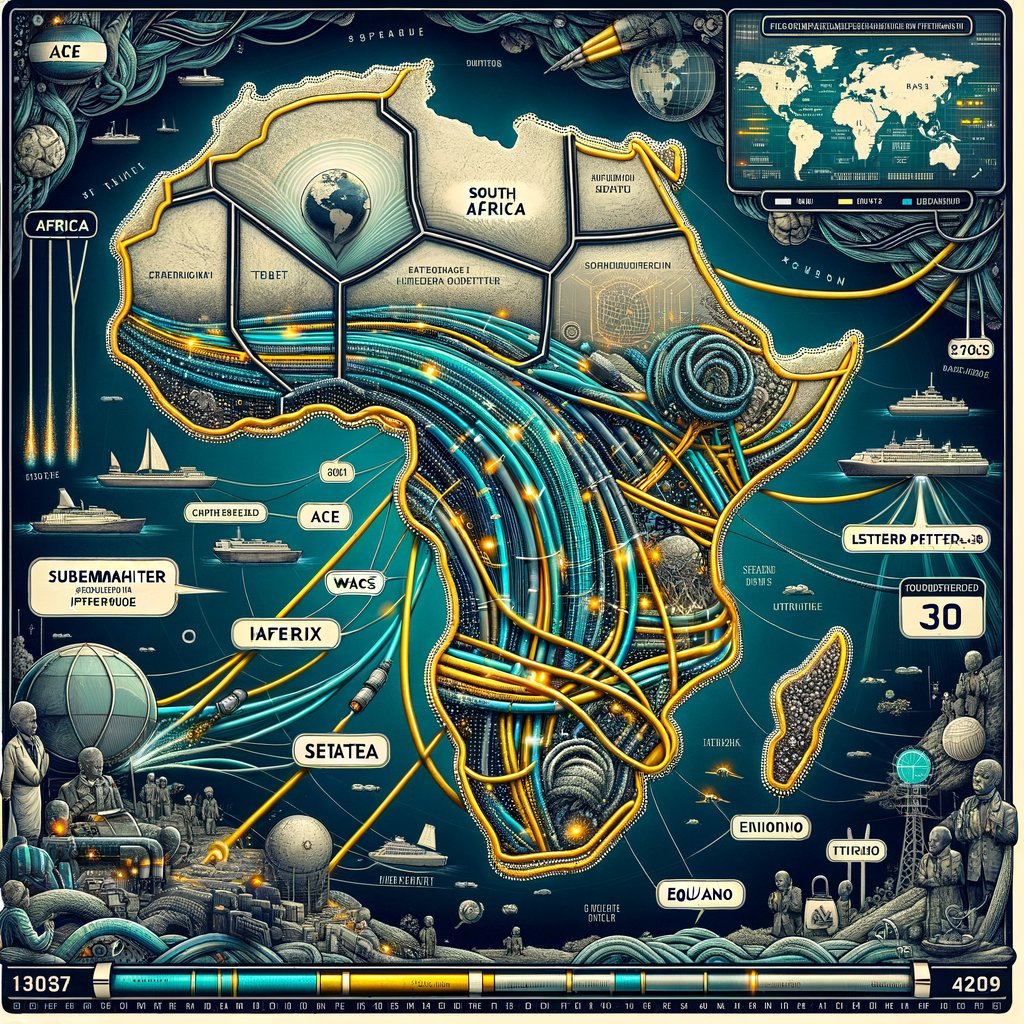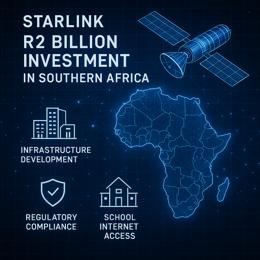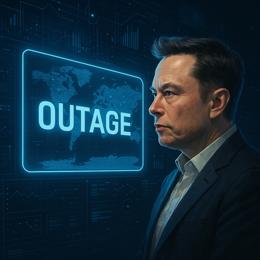Image created by AI
Navigating Internet Turbulence: South Africa's Strategic Advantage Amid Submarine Cable Breaks
South Africa's strategic geographical location at the southern tip of the continent plays a crucial role in maintaining its Internet stability, especially in light of multiple submarine cable breaks experienced this year. These incidents have put a spotlight on the vulnerabilities and challenges of maintaining undersea Internet infrastructure.
On 14 March, a significant outage impacted the West Africa Cable System (WACS), the Africa Coast to Europe (ACE), MainOne, and SAT3—all major undersea cables located off the coast of Abidjan in Côte d’Ivoire. Notably, MainOne does not extend to South Africa, which partly insulated it from the worst effects of this particular outage. Following this disruption, neighboring West African countries such as Nigeria, Benin, and Ghana faced severe Internet outages. However, South Africa’s experience was less severe due to its ability to reroute traffic through alternative cables, showcasing a resilient Internet backbone.
Experts have ruled out human activity like sabotage or accidental anchor damage for the breaks, pointing instead to a submarine landslide as the most likely cause. Such unforeseen events underscore the fragility of the global Internet infrastructure that heavily relies on submarine cables.
When the WACS and three other cables suffered near simultaneous outages, South Africa’s ability to maintain connectivity was not by mere chance. The country benefits from having multiple cables landing on its shores, with over ten submarine cables such as 2Africa, ACE, WACS, SAT3, EASSy, Equiano, and Seacom combining a staggering capacity of more than 400 terabits per second.
Just a month after the March outages, the Eastern Africa Submarine Cable System (EASSy) along with Seacom faced disruptions shortly after repairs to the West coast cables. This incident again highlighted the interconnected nature of submarine Internet infrastructure, which despite being robust, is not immune to disruptions.
Ben Roberts, the CTIO of Liquid Intelligent Technologies, pointed out during these events that all subsea capacity between East Africa and South Africa was offline, resulting in impaired Internet services across regions. South African users reported degraded performance on platforms like Netflix, as well as other online services, yet the country's overall Internet connectivity remained relatively stable.
This resilience is in large part due to the redundant systems in place. Network providers like Seacom have emphasized that their traffic rerouting processes are automatic and are designed to switch to backup cables instantly upon detecting a break. This setup is vital for maintaining Internet stability and ensuring that users and businesses are not left without connectivity.
South Africa's position as a hub with numerous landing points for international submarine cables not only enhances its connectivity but also provides a buffer against potential outages affecting any single cable. This strategic advantage is crucial for maintaining economic stability and communication in today’s digital age, where connectivity is akin to a utility similar to water and electricity.
Going forward, while South Africa appears well-equipped to handle submarine cable outages, the ongoing incidents serve as a reminder of the need for continued investment in diversifying and securing Internet infrastructure not just nationally but globally.










